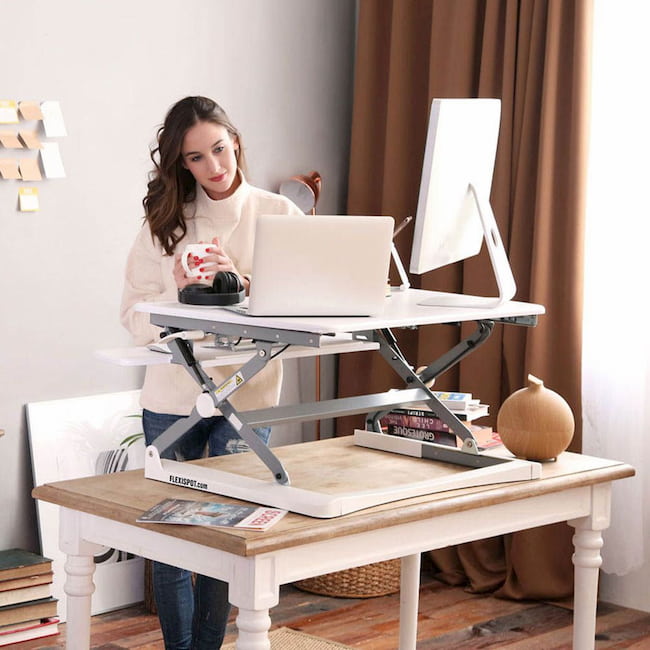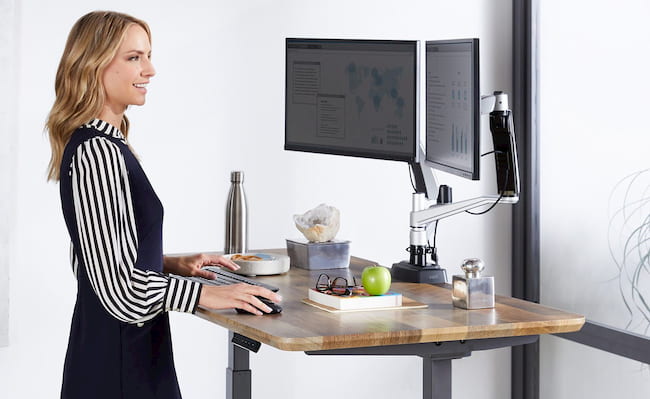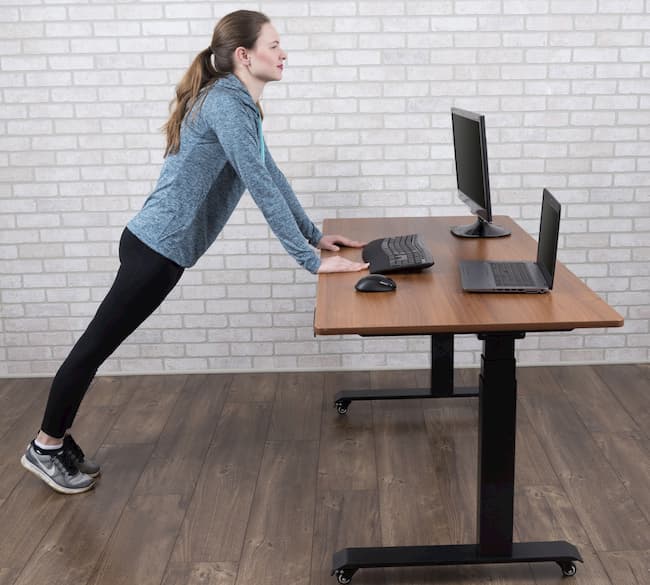Stand up desks have become a common piece of furniture in offices. And for a good reason – they allow for a simple change of working posture, from sitting to standing, and back. Investing in these desks can pay off as they help prevent back pain, minimise downtime and might even double the productivity of employees.
Here is why a standing desk is enormously advantageous for office workers. By nature, your body functions best when it moves. However, stationary sitting is the predominant position in everyday office life, which can lead to bad posture and the stiffening and joint wear and tear. So,
It has long been shown that a well-adapted, ergonomic office chair is essential in everyday office life, but experts also highlight the importance of standing up regularly in the course of the working day. According to them, you should sit for about 60% of the working time, stand 30%, and actively move during the remaining 10% of the working day.
When the desk can’t be height-adjusted, the work process becomes extremely monotonous and a number of issues can arise including tensions and chronic bad posture, dissatisfaction and irritability, circulation problems and decreased quality of work and concentration.

But besides making the right pick from the range of stand up desks, it’s important to know how to use this piece of furniture properly and adjust it to suit your body’s needs. You might think that using this type of desk is a no-brainer – you stand for a while, then sit for a while, and repeat that throughout the day. However, ergonomics is not an exact science because every body is different. So, the best height for the desk will be different for you than for someone else.
That being said, here are some instructions on how to correctly use a standing desk.
Adjust Your Standing Desk
Raise or lower the desk so that your forearms are parallel with the desk’s surface. Your hands should rest over the keyboard with straight, relaxed wrists. The keyboard as well as the mouse, should be at belly button height. This will help create a bend in the arm that is 80-85 degrees, which is a neutral position. The monitor should be approximately 45 centimetres from the face with the top of the screen at eye-level, so you are looking down slightly at 10-15 degrees.
Maintain Proper Posture
Make sure to maintain proper posture while using a standing desk – it’s essential to enjoy the benefits. Hunching, for example, can cause significant neck strain whether you are standing or sitting. In fact, using a standing desk while having a bad posture (like leaning predominantly to one side) can result in negative effects. While you might know what good posture looks like, it can be complicated to know what it feels like.
So, how do you know you’re doing it right? You just have to line up your joints. Your spine should be straight and your chin levelled (not dropped towards your neck). Your shoulders should sit in a straight line above your hips, above your knees and above your ankles. Your body should then rest on that solid structure.

Understand That Standing Too Long Can Be as Bad as Sitting
A standing desk shouldn’t replace sitting. Standing for very long periods puts a lot of pressure on your legs, which can cause swelling, varicose veins and hemorrhoids. So, when using a standing desk, make sure not to stand for too long, and remember to sit down periodically. Consider alternating every hour or so.
In the beginning, you might find that it can be tiring to stand straight for a whole hour. With time, this should become easier. On your first day, stand for 15 minutes and then sit down for a bit. Add 10 minutes when you notice you’re able to tolerate standing for longer. Your body needs to get used to first. Working on some core strengthening, back strengthening and leg exercises will help get your body in shape for standing.
Consider Setting an Alarm to Remind Yourself to Stand
You are so used to sitting in a sedentary position all day that you might forget that you have a standing desk to use. Set an alarm on your phone or computer to remind yourself to regularly alternate between standing up and sitting. After some time, you might make a habit out of it.

Mix Standing Up With Movements and Stretches
A standing desk shouldn’t replace walks, stretches and other movements. For a couple of minutes every hour, do something such as heel raises, knee bend squats, marching in place or walking up and down the hallway just to get the blood flow going.
Wear Shoes With Firm Soles and Arch Support
If your office requires formal wear, working in a pair of comfy sneakers may not be possible. Still, wearing comfortable shoes with good support is essential to reaping the benefits of a standing desk. It doesn’t have to be a sneaker, but a firm sole is crucial. Consider investing in shoes with a cushioned insole and suitable arch support.
You can also try putting gel foam shoe inserts into an existing shoe. Keep in mind, the higher the heel on the shoe, the worse for your posture and comfort it will be. Your weight is meant to be distributed equally along your entire foot. Anything that changes this isn’t good.
























